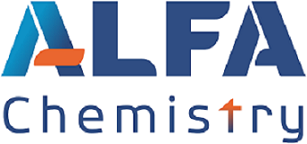| Alfa Chemistry | |
|---|---|
| Country: | United States |
| Tel: | 5166625404 |
| E-mail: | support@alfa-chemistry.com |
| QQ: | |
| Skype: | Chat Now! |
Perovskites Quantum Dots and Display Technology
Release time: 2023-03-30
Since its commercial use in 2015, although liquid crystal displays equipped with quantum dot technology have significantly improved in display color gamut and rendering effects, their popularity is far below expectations. On the one hand, the maturity of quantum dot technology is not good, and the stability and cost of products are relatively high; on the other hand, the price of models using quantum dot display technology is relatively high, which hinders the popularization of technology. With the introduction and popularization of Mini-LEDs with smaller LED light-emitting crystals, quantum dot technology will quickly become the standard choice for liquid crystal displays. In the next three years, the demand for quantum dot optical film and quantum dot diffusion plate is expected to explode.
Improving display effect and reducing system cost is an eternal trend for display technology. The improvement of the stability of the quantum dot itself is the biggest factor for cost reduction.
The new display technology puts forward higher requirements for the stability of quantum dots. Taking Micro-LED as an example, in addition to the requirements for the water and oxygen stability of quantum dots, due to the closeness to the chip, the operating temperature may exceed 100 degrees Celsius. Thermal quenching may lead to a decrease in luminous intensity during application, which is a problem that needs to be overcome when quantum dots are applied to full-color displays. In addition, as a color conversion layer material used in Micro-LED or QD-OLED technology, the compatibility with the ink system and preparation process is also a problem that quantum dot materials need to solve. Quantum dot electroluminescence (QLED) is regarded as a strong competitor for next-generation display technology, but it has limited working life and has not yet achieved commercial application.
Perovskite quantum dots promote display technology innovation
Since the first report of perovskite quantum dots in 2014, they have shown great application potential in the field of optoelectronics. This new type of material combines the advantages of perovskite materials and quantum dots, has ultra-high luminous efficiency (~100%) and color purity, and can freely adjust the emission wavelength, making it one of the most advanced luminescent materials ever. Compared with traditional inorganic quantum dots (such as CdSe), perovskite has comparable or superior performance in terms of color purity, luminous wavelength, and quantum yield. In terms of light absorption coefficient, perovskite is far superior to existing quantum dot materials, which is very beneficial for preparing the color conversion layer of Micro-LED. In addition, the simple and cheap synthesis method and compliance with EU RoHS Directive make it ideal for large-scale industrial application.
Although the stability problem has plagued the process of commercial application, the stability of perovskite quantum dots has made great progress in recent years. Availing a series of preparation methods, such as Template Method, Thermal Injection Method, Ligand-Assisted Reprecipitation Method (LARP), Ultrasonic Method, Solvothermal Method, Microwave-Assisted Method, and Ball Milling Method, scientists at Alfa Chemistry are capable of tailor-made the following perovskites quantum dot products, including but not limited to: Perovskites Quantum Dots, Cadmium-based Quantum Dots, Carbon Dots, CdS Quantum Dots, CdS/ZnS Quantum Dots, CdSe Quantum Dots, CdSe/CdS Quantum Dots, CdSe/ZnS Quantum Dots, CdTe Quantum Dots, CdTe/ZnS Quantum Dots, Core/shell Quantum Dots, Fluorescent Quantum Dots, Functional Quantum Dots, InP Quantum Dots, InP/ZnS Quantum Dots, PbS Quantum Dots, Perovskites Precursors, Quantum Dot Kit, Single Layer Quantum Dots, Upconverting Nanoparticles, ZnS Quantum Dots, and ZnSe/ZnS Quantum Dots.

